
Art has the power to transcend time, telling stories that shape cultures and inspire generations. Among the vast array of artistic expressions, history paintings hold a unique place in the art world.
These masterpieces capture significant events, legendary figures, and pivotal moments in human history, inviting viewers to reflect on the past.
From the Renaissance to modern times, some paintings have become iconic, celebrated for their artistic brilliance and historical significance.
In this exploration of the ten most famous history paintings, readers will discover works that have not only defined artistic movements but also influenced societal values and trends.
Each piece serves as a window into the era it represents, revealing the genius of its creator and the stories behind the brushstrokes.
1. Liberty Leading the People – Eugène Delacroix

Liberty Leading the People, painted by Eugène Delacroix in 1830, symbolizes the July Revolution in France. It’s a dynamic composition featuring a bare-breasted woman representing Liberty, brandishing the French flag.
Surrounding her are diverse members of society uniting for freedom. The painting captures the revolutionary spirit and has inspired global movements, including the Statue of Liberty.
Now housed in the Louvre, this masterpiece exemplifies Romanticism and serves as a powerful reminder of the quest for liberty and justice.
2. The Raft of the Medusa – Théodore Géricault
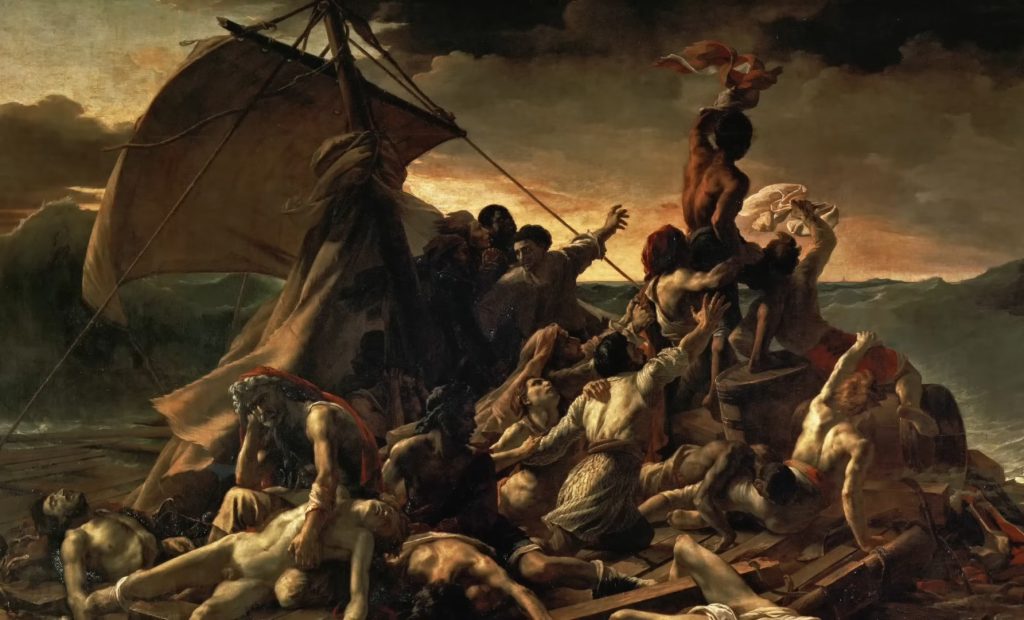
The Raft of the Medusa depicts a tragic event from 1816, when the French frigate Méduse sank off the coast of Africa. Géricault vividly portrays the desperate struggle of 147 sailors who became stranded on a makeshift raft.
After 13 harrowing days at sea, only 15 survivors endured the brutal conditions, including instances of cannibalism.
The colossal painting showcases a dramatic pyramidal composition, capturing the moment the survivors spot a distant rescue ship, embodying human resilience and despair. Now housed in the Louvre, this work remains an enduring symbol of Romanticism.
3. Oath of the Horatii – Jacques-Louis David
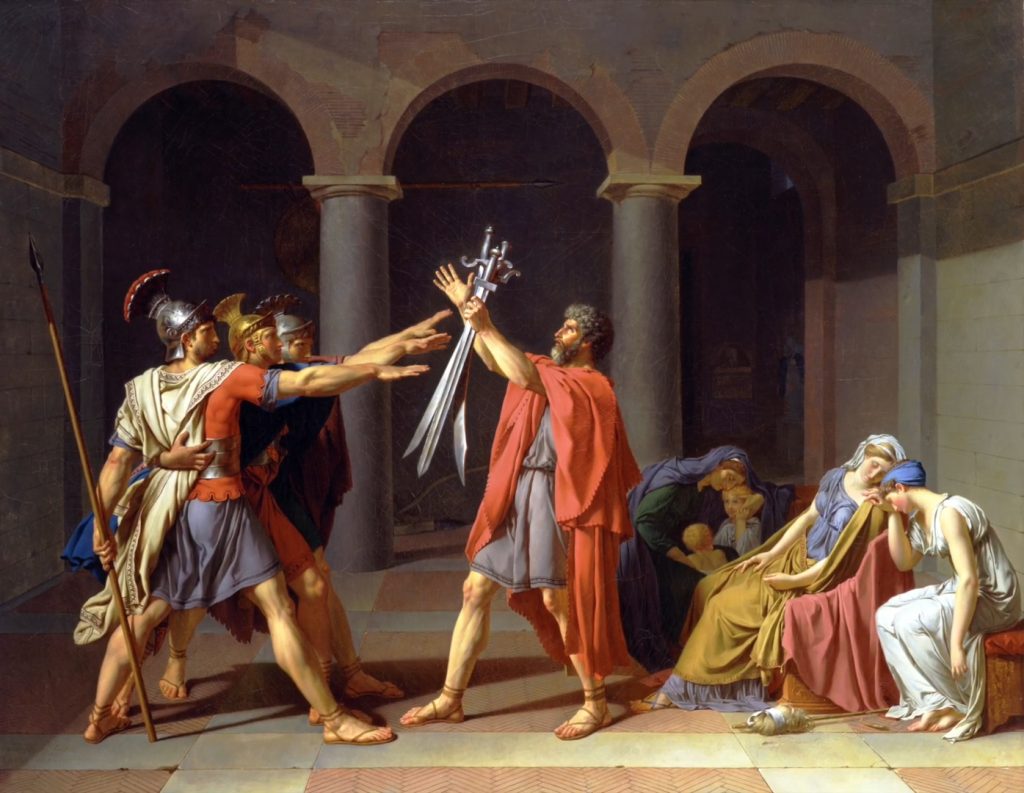
“Oath of the Horatii” is a seminal artwork by Jacques-Louis David, completed in 1784. It depicts three brothers from the Horatii family swearing allegiance to defend Rome against the rival Curiatii.
The painting features strong neoclassical elements, showcasing a dramatic contrast between the stoic male figures and the emotional women in the background.
David’s use of sharp lines and a vivid color palette reinforces themes of duty, sacrifice, and patriotism.
This masterpiece not only exemplifies neoclassicism but also reflects the societal values of the French Revolution era.
4. Guernica – Pablo Picasso

Guernica, painted in 1937 by Pablo Picasso, stands as a monumental anti-war statement. This large-scale Cubist piece commemorates the bombing of the Basque town of Guernica during the Spanish Civil War.
Picasso utilized a stark grayscale palette to convey the horror and suffering inflicted upon innocent civilians, making it one of the most profound political artworks of the 20th century.
Currently displayed at Madrid’s Museo Reina Sofía, Guernica continues to resonate, symbolizing the anguish of war and the fight for peace.
5. The Night Watch – Rembrandt
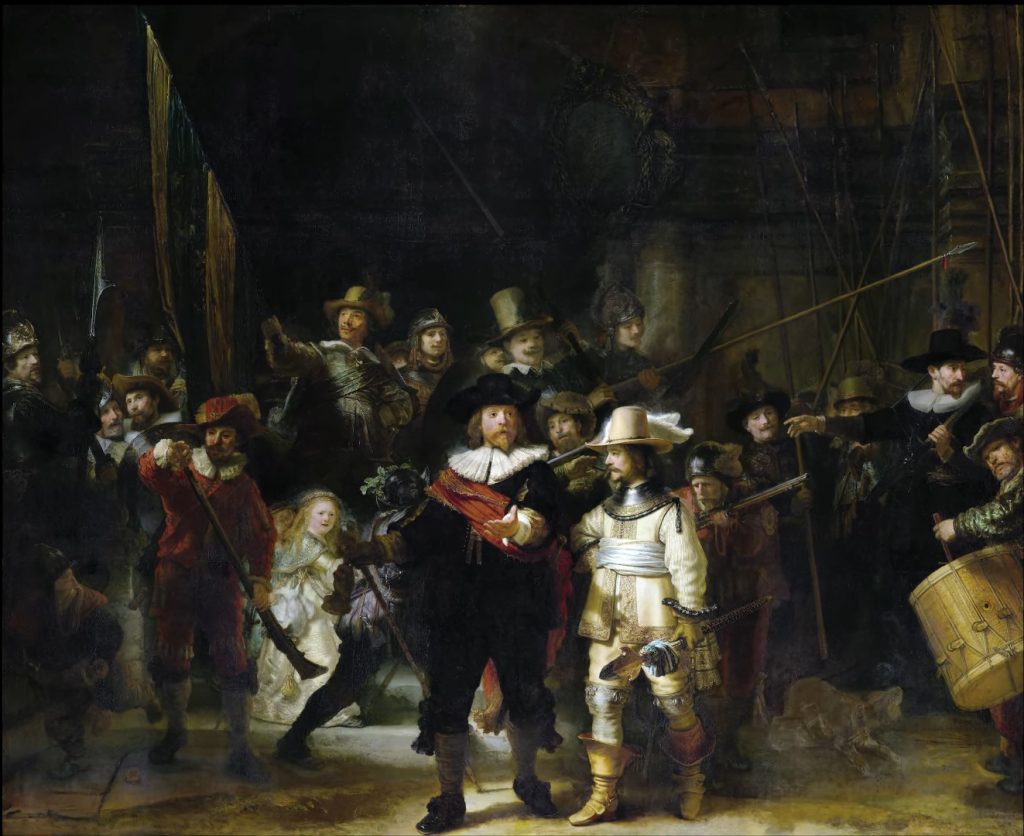
“The Night Watch,” painted in 1642 by Rembrandt van Rijn, stands as a hallmark of the Dutch Golden Age.
This large-scale group portrait illustrates Captain Frans Banning Cocq and Lieutenant Willem van Ruytenburch leading a civic militia into action.
Remarkably, Rembrandt employs dramatic light and shadow, guiding viewers’ attention to the key figures.
Despite its name suggesting a night scene, it’s essentially a morning setting, showcasing the dynamic movement of the militiamen. Housed in the Rijksmuseum, this masterpiece continues to captivate and inspire audiences worldwide.
6. The Death of General Wolfe – Benjamin West
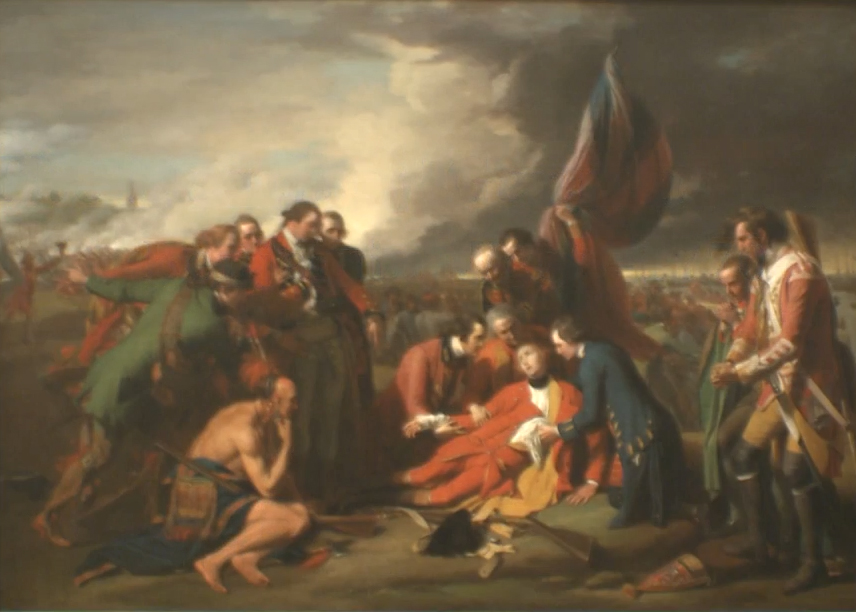
Benjamin West’s “The Death of General Wolfe,” painted in 1770, depicts the moment of General James Wolfe’s death during the Battle of Quebec in 1759.
This neoclassical masterpiece captures the emotional gravity of the scene, illustrating Wolfe surrounded by his comrades as he succumbs to his injuries.
West employs dramatic lighting to highlight the figures and evoke a sense of heroism and sacrifice.
The painting merges historical accuracy with artistic interpretation, marking a turning point in the portrayal of contemporary historical events in art.
Housed in the National Gallery of Canada, it remains an iconic representation of British military history.
7. The Last Judgment – Michelangelo

Michelangelo’s “The Last Judgment,” painted from 1536 to 1541, is a monumental fresco located on the altar wall of the Sistine Chapel. This dramatic portrayal depicts the Second Coming of Christ and the final judgment of souls.
Featuring over 300 figures, the composition blends divine power with human emotion, showcasing the tension between salvation and damnation.
The artwork employs vivid colors and dynamic poses, reinforcing Michelangelo’s mastery of human anatomy. “The Last Judgment” remains a pivotal piece of Renaissance art, illustrating the theological themes of the era.
8. The Birth of Venus – Sandro Botticelli

Botticelli’s “The Birth of Venus,” painted around 1484-1486, is a pivotal example of Renaissance art that showcases mythological themes. It features Venus, the goddess of love and beauty, emerging from the sea on a scallop shell.
Botticelli employs a harmonious color palette and flowing lines to emphasize Venus’s divine beauty, while Zephyrs, the winds, gently carry her to shore.
Housed in the Uffizi Gallery, this iconic work reflects Renaissance ideals of beauty, classical mythology, and Neoplatonism, captivating viewers with its ethereal grace.
9. Las Meninas – Diego Velázquez
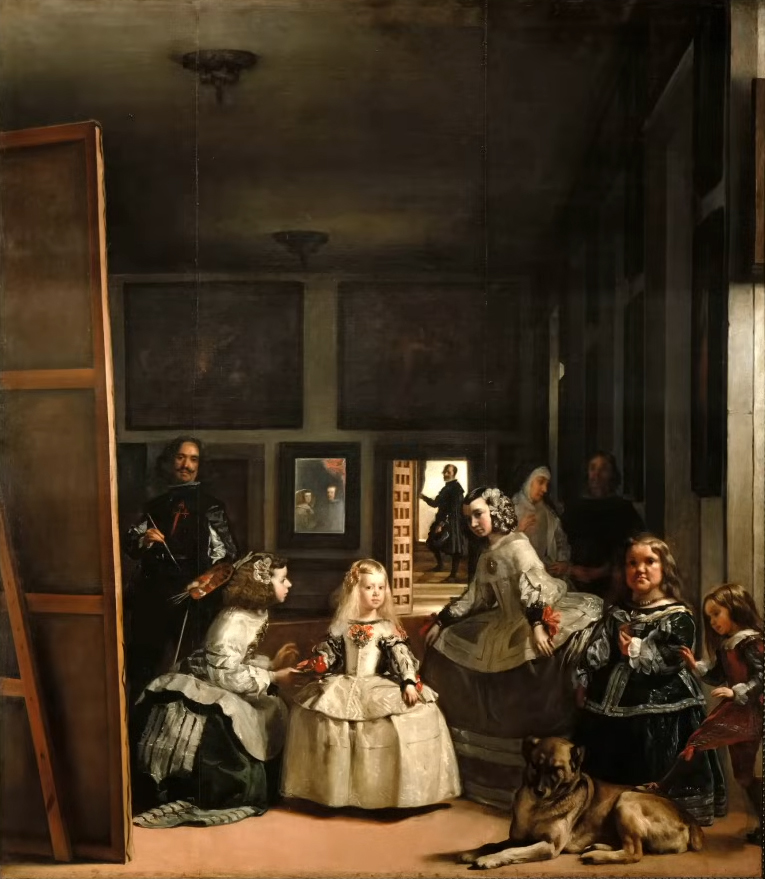
“Las Meninas,” painted by Diego Velázquez in 1656, stands as a complex oil masterpiece. It features the young Infanta Margarita surrounded by her maids, chaperone, and two dwarfs, offering a unique glimpse into the Spanish royal court.
Velázquez ingeniously includes himself in the scene, painting at his easel, which invites viewers to question the nature of perception and reality.
This iconic work, housed in Madrid’s Museo del Prado, is hailed as Velázquez’s greatest achievement, blending realism with artistic philosophy.
10. The Third of May 1808 – Francisco Goya
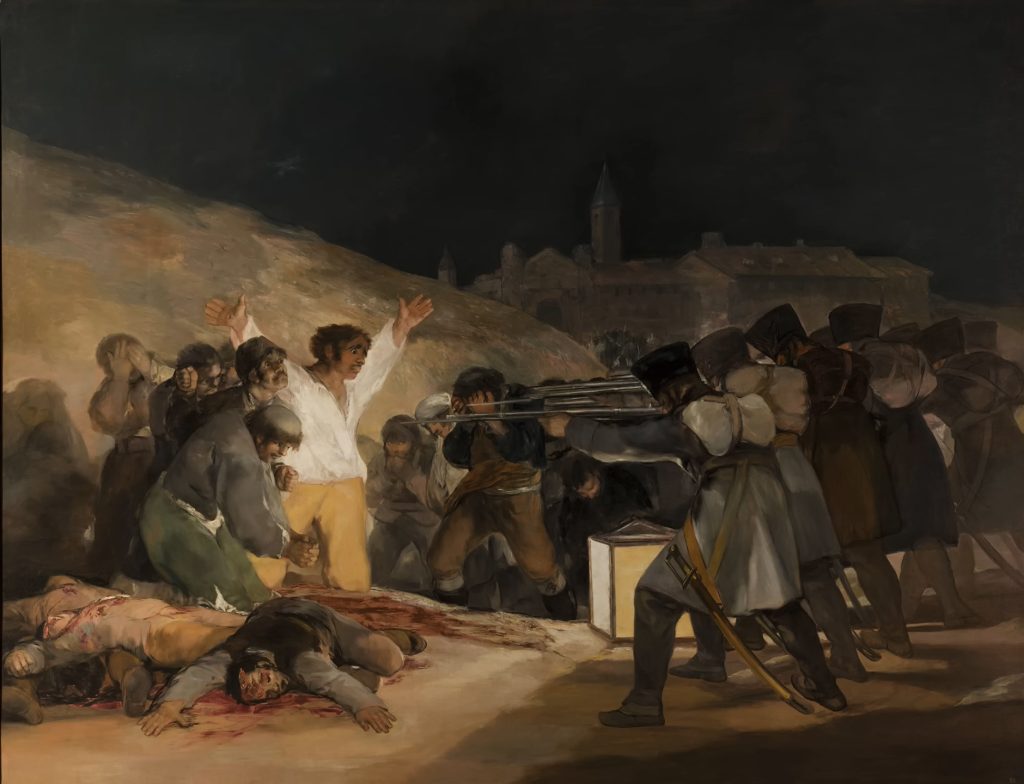
Goya’s “The Third of May 1808” stands as a poignant depiction of the Spanish resistance against Napoleon’s forces. Completed in 1814, it captures the emotional turmoil of the Spanish rebels facing execution.
Goya’s dramatic use of light highlights the victims’ despair, while the bloodshed symbolizes the brutality of war. This artwork serves as Goya’s apology to the Spanish people, reflecting their suffering.
Its compelling portrayal of humanity during conflict has solidified its status as a cornerstone of modern art.






